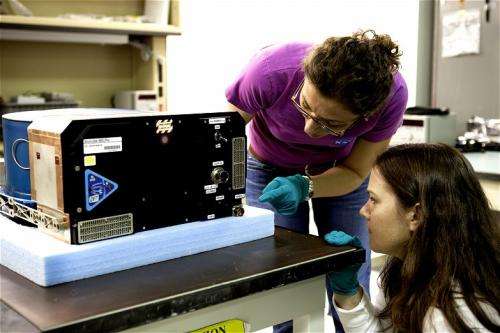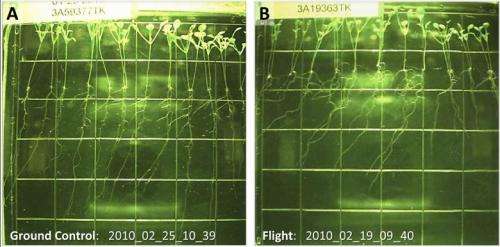Space Station study seeks how plants sense 'up' and 'down'

On Earth, we take for granted that a plant grows up and its roots grow down. In space, however, this seemingly predictable formula is upended. How do plants sense "up" and "down" where those relative positions don't exist?
The Biotube-MICRO investigation that recently arrived to the International Space Station aims to investigate, and what it finds could have big implications for long-duration human spaceflight.
The study was delivered to the space station April 20 aboard a Space Exploration Technologies (SpaceX) Dragon spacecraft. It's one of several science payloads on the SpaceX-3 mission, the company's third contracted commercial resupply flight to the orbiting laboratory.
"What we learn from this experiment will help us grow plants in space, because right now, roots grow in random directions due to the lack of gravity," explained Ralph Fritsche, a payload manager with the International Space Station Ground Processing and Research Project Office at NASA's Kennedy Space Center in Florida. "It will also provide fundamental understanding of plant biology that benefits us on Earth."
Biotube-MICRO will help scientists understand how gravity guides plants into growing correctly. Since starch grains in plant cells react to magnetic fields, the study uses extremely strong magnets to try to influence the direction of root growth. If the root curves away from the magnet, it's an indication that plants can use magnetic fields, rather than the downward pull of gravity, to determine which way to grow.

The full name of the project is Biotube-Magnetophoretically Induced Curvature in Roots. Developed by the University of Louisiana, Lafayette, it contains three magnetic field chambers, each of which carries eight cassettes holding 10 Brassica rapa seeds. Brassica rapa is a quick-growing plant also known as field mustard.
Aboard the space station, resident crew members will install the Biotube-MICRO investigation in a standard payload rack, turn it on, and complete a startup sequence.
The study itself is completely automated. A small amount of water will be injected into each seed cassette, prompting the seeds to germinate. Small cameras will record the plants' growth and send these images to scientists on Earth, so they can decide when to conclude the study. At that point, application of either formaldehyde or RNAlater will stop the growth and preserve the seedlings.
"We don't need a lot of growth. We'll have a seed the size of a BB, and a root maybe an inch long," Fritsche said.
The Biotube-MICRO payload will return to Earth when Dragon splashes down in the Pacific Ocean at the end of the SpaceX-3 mission. Scientists will examine the returned samples to help improve understanding of plant growth in space and on Earth.
Provided by NASA





















